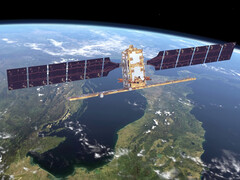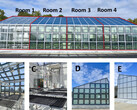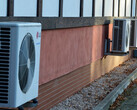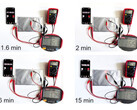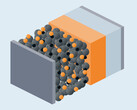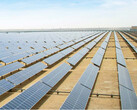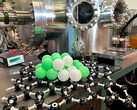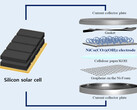The well-known, robust and relatively lightweight silicon-based solar cell is simply not suitable for use in space. The constant exposure to protons interrupts the flow of electrons, which leads to a rapid decline in terms of efficiency.
On Earth, these protons carry less energy and radiation, which makes them basically harmless and poses no issue for solar arrays. After all, the magnetic field and our atmosphere intercept these protons. And if they don’t, we can enjoy beautiful auroras also known as polar, northern and southern lights.
But why protons? More precisely, these are hydrogen nuclei, the main component of the sun. Without their electrons, they are simply protons.
The current standard for powering satellites and the ISS involves indium and gallium. Such solar cells are extremely robust but also heavy, inflexible, and expensive. This is pretty much the opposite of what you would want to put into a launch vehicle for a new satellite.
Surprisingly stable organic molecules
Researchers at the University of Michigan have conducted experiments which simulate three years of proton radiation exposure. In these tests, organic solar cells based on hydrocarbon chains have proven to be remarkably robust. However, robustness is not the only factor to consider here.
Their high reliability requires short alkyl chains. With longer alkyl chains with four or more carbon atoms, the protons and their solar radiation knock out individual hydrogen atoms and form charged H2 molecules.
Since these longer molecules are more efficient, further research has shown that organic solar cells can be thermally restored. As the required temperatures of 370 Kelvin or almost 100 degrees Celsius can be reached in sunlight, the use of this technology in space would be possible. That being said, this approach does entail a higher amount of maintenance.
Fundamentally, the researchers see potential in both methods of power generation. Considering that the number of satellites for communication and observation will continue to grow and that new manned missions are planned, progress in this field could be very beneficial. In the long term, this technology could also make its way to regular residential solar panels on your roof.




